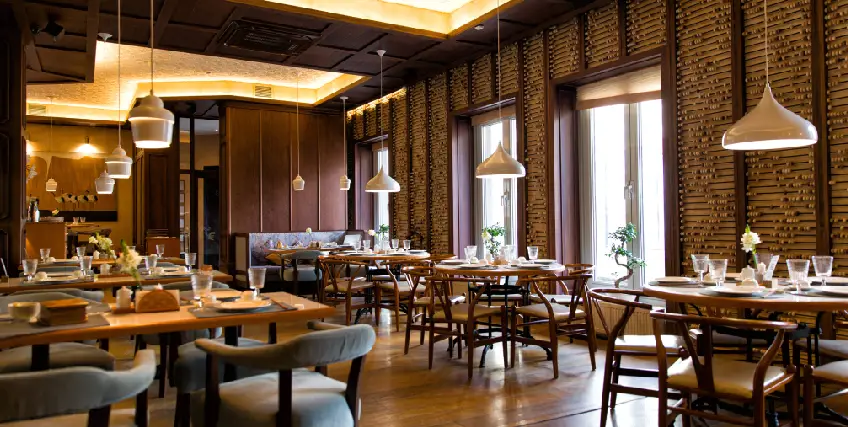Business Loan for New Restaurant: Financing Options for First-Time Owners
June 02, 2025 | Last Updated on: June 02, 2025

Owning a restaurant is a dream for many people but reality is far from rosy. Running a restaurant means juggling various expenses, from equipment and staff to location and marketing. On top of that, it becomes essential to have enough capital in hand to meet these expenses. For many, securing a business loan for a new business is the first major step in ensuring that there is no glitch in the daily operation.
A business loan for a new business can help cover your biggest early expenses and give you the confidence to open your doors successfully. This article breaks down the financing options available to first-time restaurant owners, including SBA loans, merchant cash advances, and equipment financing. We’ll also cover how to apply, what mistakes to avoid, and how to plan for funding beyond your launch.
Whether you are eyeing a food truck or a fine dining experience, understanding your financing options is the first step. Let’s get started.
Why Restaurant Startups Need Capital
Restaurant costs go beyond just rent and ingredients. Startup expenses include:
- Commercial kitchen setup (ovens, grills, coolers)
- Point-of-sale systems
- Initial food and beverage inventory
- Licensing and permits
- Furniture and decor
- Staff salaries and training
According to Forbes, the average cost of opening a restaurant ranges from $275,000 to $500,000. Without upfront capital, most owners either delay opening or cut corners, which hurts long-term survival.
This is why new restaurant business loans are crucial. Without proper funding, most startups face cash flow problems within the first year. A business loan for a new business can help cover early burn rates, handle inventory purchases, or fund payroll when margins are tight.
Having capital also helps you absorb early shocks such as slow openings, supplier delays, unexpected repairs and keep the business running smoothly. For first-time owners, funding is not a luxury. It's a necessity.
Top Financing Options for First-Time Restaurant Owners
Not every financing fits every restaurant. Below are your most viable options.
SBA Loans
Perhaps one of the most trusted financing options available in the country, SBA loans are backed by the U.S. Small Business Administration. Offering low interest rates and long repayment terms for qualified applicants, these loans are a good option for borrowers with strong credit and detailed business plans. If you're applying for a business loan for a new business, then you should explore SBA 7(a) loans as they can be more affordable than other financing options.
Equipment Financing
A restaurant always needs equipment. Whether it is a commercial oven, walk-in freezer, or an espresso machine, there is always a demand for them. This is where equipment financing comes in. It helps you buy machinery without paying upfront. The equipment itself serves as collateral. It's a fast and useful route for any business loan for a new business needing kitchen tools.
Merchant Cash Advance
A merchant cash advance gives you a lump sum based on future credit card sales. Repayment is automatic and tied to your daily sales. It’s expensive but fast. Many new restaurants use this as a stop-gap business loan for a new business.
Business Line of Credit
Think of it like a credit card for your restaurant. Borrow only what you need and repay as you go. Great for managing inventory or handling emergencies. It offers flexible access to a business loan for a new business.
Online Term Loans
Online lenders offer short- to medium-term loans with quick funding decision. These are ideal if you need funds fast and don’t qualify for traditional loans. It's one of the easiest ways to get a business loan for a new business with limited credit history.
Eligibility Criteria for Restaurant Loans
Lenders don’t just hand out money. When you’re applying for a business loan for a new business, they’ll look at your credit, plan, and paperwork.
Personal Credit Score
Most lenders want a score of at least 650. If your score is below that, some options like merchant cash advances or secured loans may still be open. A strong score increases your chances of getting a business loan for a new business.
Detailed Business Plan
A plan with revenue projections, competitive analysis, and cost breakdowns is essential. Lenders want to know how you’ll use the money. A compelling plan improves your odds of securing a business loan for a new business.
Industry Experience
Even part-time work in restaurants helps. It shows lenders that you understand the business. Experience matters when applying for a business loan for a new business.
Collateral
Some lenders require you to back the loan with business or personal assets. This lowers their risk. You’ll likely need collateral for a high-value business loan for a new business.
Business Entity and Licenses
You must be a registered legal entity and have permits in place. No lender will offer a business loan for a new business to someone without compliance.
How to Apply for a Business Loan
Once you’re clear on the type of loan you want, the process begins. If you’re applying for an SBA loan for a new restaurant, be ready to meet stricter documentation and credit score requirements.
Draft a Business Plan
Your plan should cover your concept, target market, pricing, marketing strategy, and financial forecasts. It’s often the backbone of your business loan for a new business application.
Gather Documents
You’ll need tax returns, lease agreements, ID proof, and vendor contracts. Most business loans for a new business applications fail due to missing paperwork.
Research Lenders
Compare offers from traditional banks, SBA lenders, and fintech platforms. Each lender has different approval criteria for a business loan for a new business.
Submit Application
Apply online or in person. Double-check every detail. A clean application improves your shot at securing a business loan for a new business.
Respond to Follow-Ups
Lenders might ask for more documents or clarification. Quick replies move your business loan for a new business faster through the pipeline.
Common Mistakes First-Time Owners Should Avoid
New restaurant loans may seem easy to get, especially from online lenders. But many business owners sign up without understanding the interest structure or repayment terms. That’s why it’s key to match the right funding type with your operational needs. Otherwise, here’s how it can go wrong.
Underestimating Startup Costs
Many new owners assume they need less than they do. This leads to underfunding and failure. A realistic budget is key to using your business loan for a new business effectively.
Choosing the Wrong Loan Type
Equipment financing won't help with rent. Pick a loan that fits your need. Misaligned loans waste time and hurt your business loan for a new business results.
Ignoring Interest and Fees
Low monthly payments often hide high interest rates. Read the fine print before accepting a business loan for a new business.
Not Building Credit
Early-stage business owners often skip building credit. That’s a mistake. Business credit improves your future chances of getting a business loan for a new business.
Rushing the Application
Incomplete or sloppy applications slow things down. Prepare in advance to improve your chances for a business loan for a new business.
Future Funding: Planning Beyond Launch
Once your restaurant is up and running, your financial needs don’t end. You may need to update your menu, hire more staff, or remodel your space. That’s where a business loan for a new business with options like lines of credit or refinancing can help.
If you’re thinking of opting for a business loan for a new business, consider:
- Working capital loans for slow seasons
- Lines of credit for recurring purchases
- Equipment upgrades as your kitchen evolves
Renovations to keep the space appealing
If you start with a well-structured a business loan for a new restaurant, you're not just solving today’s cash flow issues, you’re setting up for future growth. Lenders often reward businesses that repay early with access to larger funding amounts down the line.
If you opted for an SBA loan for a new restaurant, the long-term repayment schedule can keep your monthly expenses stable while your revenue grows.
Conclusion
Opening a restaurant is a bold move—and the right financing can make all the difference. From SBA loans to equipment financing, there are options that fit nearly every budget and business model.
A business loan for a new business doesn’t just help you launch—it sets the tone for your long-term growth. With a strong plan and the right lender, first-time restaurant owners can turn vision into reality.
Take the next step. Compare lenders, get your documents in order, and make the move that brings your restaurant's dream to life.
Frequently Asked Questions on Business Loan for New Restaurant
Do lenders approve restaurant loans with no business history?
New owners often assume they’re ineligible, but that’s not always the case. Lenders review your experience, personal credit, collateral, and business plan. Even without past business ownership, a strong plan and realistic revenue forecast can support a business loan for a new business, especially through SBA programs or equipment-specific financing options.
Will bad credit stop me from opening my restaurant?
Poor credit makes things harder but not impossible. Traditional banks may be strict, but online lenders and equipment financing companies often work with lower scores. You’ll need to show strong business potential, upfront investment, or collateral. In some cases, a co-signer might help you get approved for a smaller business loan for a new business to start.
What loan type works best for buying kitchen equipment?
You don’t always need a full lump-sum loan for equipment. Equipment financing allows you to spread the cost over time using the gear itself as collateral. Many owners use this in combination with a business loan for a new business to cover broader expenses like staffing, inventory, and rent while still funding appliances efficiently.
Are personal assets required to secure restaurant financing?
Collateral requirements vary. Some lenders require assets like vehicles or savings; others use the equipment or projected income. If you’re offering personal property, be sure the loan structure makes sense. A business loan for a new business doesn’t always need collateral but it helps reduce interest or improve approval odds.
Are grants or state programs worth considering?
Grants are competitive, but they have free money. Some states, especially post-COVID, offer relief funds or startup grants for food businesses. These won’t fully replace a business loan for a new business, but they’re valuable when stacked with other financing. Keep checking local economic development websites for updates or open applications.
Frequent searches leading to this page
Related Articles
Term Loans are made by Itria Ventures LLC or Cross River Bank, Member FDIC. This is not a deposit product. California residents: Itria Ventures LLC is licensed by the Department of Financial Protection and Innovation. Loans are made or arranged pursuant to California Financing Law License # 60DBO-35839




